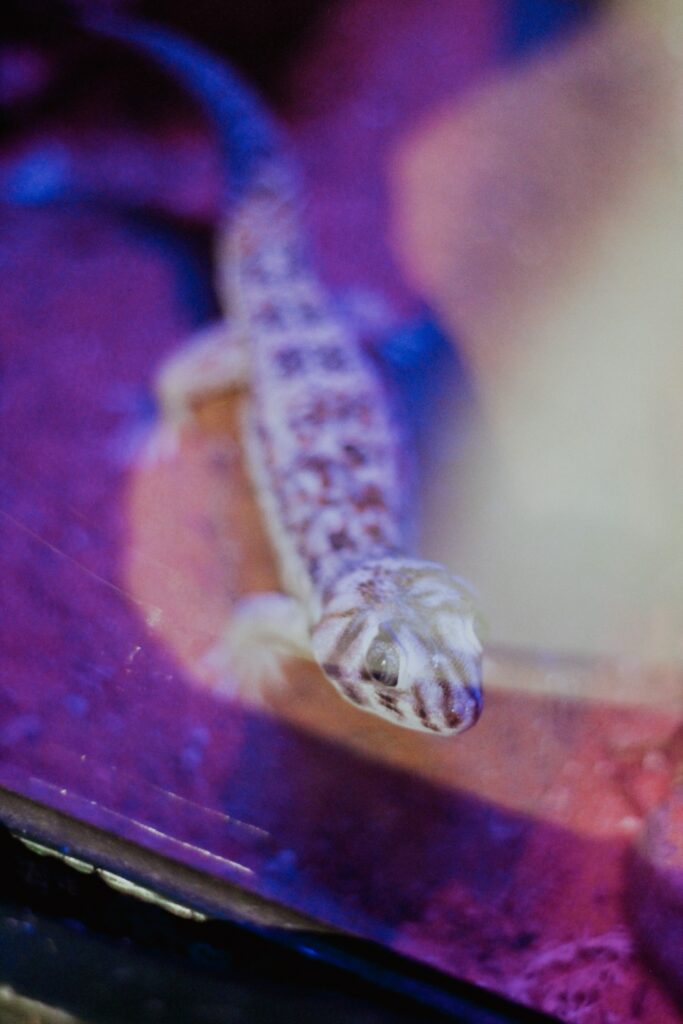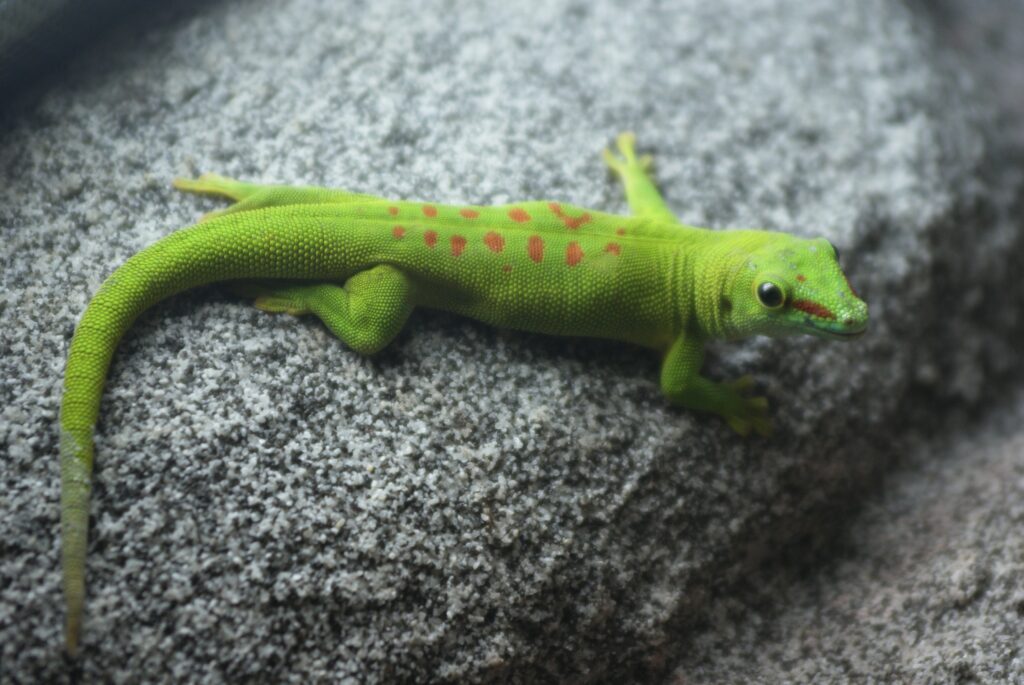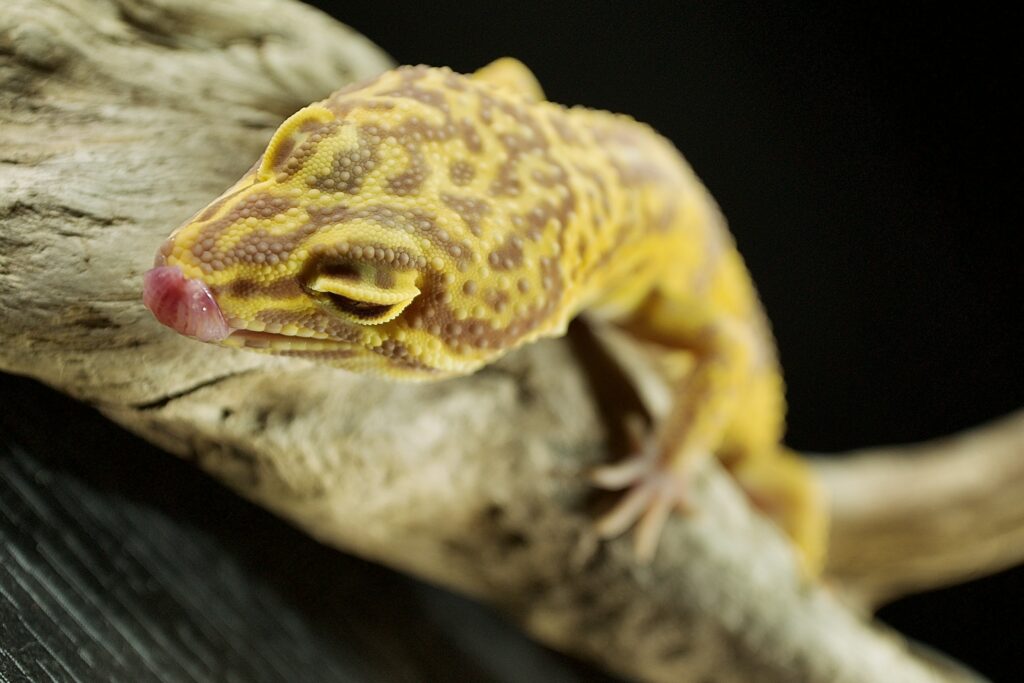
Gecko owners often find themselves wondering how to accurately measure their pet’s size. In this article, you will discover a simple yet effective method to measure your gecko’s size. By following these easy steps, you will be able to gather precise measurements, providing valuable information for monitoring your gecko’s growth and ensuring its overall well-being. Whether you are a beginner or a seasoned gecko enthusiast, mastering this measurement technique will prove to be an indispensable tool in your reptile husbandry journey.

Choosing the Right Method
When it comes to measuring your gecko’s size, it’s important to choose the right method to ensure accurate and consistent results. There are a few different methods you can use, including using a ruler, a soft tape measure, or a string and a measuring tape. Each method has its own advantages and disadvantages, so it’s important to consider your own preferences and the specific needs of your gecko before making a decision.
Using a Ruler
Using a ruler is one of the simplest and most straightforward methods of measuring your gecko’s size. All you need is a ruler with clear markings and a flat surface for your gecko to rest on. Simply position your gecko on the surface and align the ruler with the tip of its head and the end of its tail. This method is best suited for geckos that are calm and not prone to moving around too much.
Using a Soft Tape Measure
If your gecko is a bit more active or fidgety, using a soft tape measure may be a better option. Soft tape measures are flexible and can easily wrap around the body of your gecko, allowing for more accurate measurements. To use a soft tape measure, simply position your gecko on a flat surface and gently wrap the tape measure around the widest part of its body. Be sure to keep the tape measure snug, but not too tight, to ensure an accurate measurement.
Using a String and a Measuring Tape
For geckos that are exceptionally small or have delicate body structures, using a string and a measuring tape can be a gentle and effective method. Start by positioning your gecko on a flat surface and gently wrap a string around the widest part of its body or the desired measurement area. Once you have the string in place, carefully remove it from your gecko and lay it flat on a measuring tape to determine the length. This method allows for a more comfortable and customizable measurement process.
Preparing Your Gecko for Measurement
Once you’ve chosen the right method for measuring your gecko’s size, it’s important to prepare your gecko for the process. This involves handling your gecko with care, keeping it calm, and ensuring its safety throughout the measurement process.
Handling with Care
Geckos are delicate creatures and can be easily injured if mishandled. When preparing your gecko for measurement, make sure to approach it with gentle and steady hands. Avoid squeezing or gripping your gecko too tightly, as this can cause distress and potential harm. Instead, use a gentle but secure grip to prevent your gecko from slipping or escaping during the measurement process.
Keeping the Gecko Calm
Measuring your gecko’s size requires its cooperation, and a calm gecko is more likely to stay still and provide accurate measurements. To keep your gecko calm, create a quiet and stress-free environment. Avoid loud noises, sudden movements, or other potential stressors that can make your gecko feel threatened. Take your time and be patient with your gecko, allowing it to adjust to its surroundings and feel comfortable during the measurement process.
Ensuring Safety
Safety is paramount when measuring your gecko’s size. Make sure the area where you will be measuring your gecko is free from any potential hazards or escape routes. Remove any objects or obstacles that your gecko could encounter during the measurement process. Additionally, if using any tools or equipment, such as rulers or measuring tapes, ensure that they are in good condition and pose no harm to your gecko. Always prioritize the safety and well-being of your gecko throughout the measurement process.
Measuring the Length
Measuring the length of your gecko is an important aspect of understanding its overall size and growth. Follow these steps to ensure an accurate measurement of your gecko’s length.
Positioning the Gecko
Place your gecko on a flat surface, such as a table or countertop, ensuring that it is secure and cannot easily escape or move away.
Determining Starting Point
To measure the length of your gecko, you will need to determine the starting point. Align your measuring tool, whether it be a ruler or tape measure, with the tip of your gecko’s head. Make sure the measuring tool is straight and securely in place.
Straightening the Gecko
Gently straighten your gecko’s body so that its tail is fully extended. Be careful not to apply too much pressure or force that could cause discomfort or harm to your gecko.
Measuring Tip of Head to End of Tail
Using your measuring tool, carefully measure from the tip of your gecko’s head to the end of its tail. Ensure that the measuring tool is straight and aligned with your gecko’s body for an accurate measurement.
Recording the Length
Once you have obtained the measurement, record the length of your gecko. This will serve as a reference for future measurements and allow you to track your gecko’s growth over time.
Measuring the Width
In addition to measuring the length of your gecko, measuring the width can provide valuable insights into its overall size and body structure. Follow these steps to accurately measure the width of your gecko.
Positioning the Gecko
Place your gecko on a flat surface, ensuring that it is secure and cannot easily escape or move away.
Locating the Widest Part of the Body
Identify the widest part of your gecko’s body, which is typically around the midsection or the area just behind the front legs. This is the area where you will be measuring the width.
Using a Flexible Measuring Tape
To measure the width, it is best to use a flexible measuring tape that can conform to the curves of your gecko’s body. Wrap the measuring tape around the widest part of your gecko’s body, making sure it is snug but not too tight.
Measuring the Width
Once the measuring tape is in place, take note of the measurement. Ensure that the measuring tape is aligned with your gecko’s body and that the measurement is consistent and accurate.
Recording the Width
After obtaining the width measurement, record it for future reference. This will help you track any changes or growth in your gecko’s body structure over time.

Measuring the Height
Measuring the height of your gecko can provide additional insight into its overall size and physical attributes. Follow these steps to measure the height of your gecko accurately.
Positioning the Gecko
Place your gecko on a flat surface, ensuring that it is secure and cannot easily escape or move away.
Determining Starting Point
To measure the height of your gecko, you need to determine the starting point. Align your measuring tool, whether it be a ruler or measuring tape, with a flat surface and position it adjacent to your gecko.
Using a Ruler or Measuring Tape
Depending on the size and behavior of your gecko, you can use either a ruler or a measuring tape to determine its height. A ruler works well for smaller geckos, while a measuring tape provides greater flexibility for larger or more active geckos.
Measuring Vertical Distance
Carefully raise the measuring tool from the surface to the highest point of your gecko’s body, such as its back or crest. Ensure that the measuring tool remains straight and parallel to your gecko’s body throughout the measurement process.
Recording the Height
After obtaining the height measurement, record it for future reference. This will allow you to track any changes in your gecko’s height over time and monitor its growth and development.
Measuring the Weight
Measuring your gecko’s weight is an essential part of assessing its overall health and well-being. Follow these steps to accurately measure your gecko’s weight.
Using a Scale
To measure your gecko’s weight, you will need to use a scale specifically designed for small animals. Avoid using household scales, as they may not provide accurate readings for the small weight range of a gecko.
Choosing the Right Type of Scale
There are two common types of scales suitable for weighing geckos: digital scales or balance scales. Digital scales provide a digital readout of the weight, while balance scales require manual adjustment and measurement.
Preparing the Scale
Ensure that the scale is set to zero before placing your gecko on it. This will ensure an accurate measurement of your gecko’s weight without including the weight of any additional objects.
Placing the Gecko on the Scale
Gently place your gecko on the scale, ensuring that its entire body is supported and that it remains calm. Allow your gecko a moment to settle before taking the weight measurement.
Recording the Weight
Once your gecko is settled and still on the scale, record the weight measurement. This will serve as a benchmark for monitoring your gecko’s weight over time and assessing its overall health and nutrition.

Measuring the Girth
Measuring the girth of your gecko allows you to understand its body proportions and monitor any changes in its size or weight. Follow these steps to accurately measure your gecko’s girth.
Positioning the Gecko
Place your gecko on a flat surface, ensuring that it is secure and cannot easily escape or move away.
Choosing the Correct Part of the Body
Identify the area of your gecko’s body where you want to measure the girth. This is typically around the midsection or the area just behind the front legs. Ensure that the chosen area is consistent and measurable.
Using a Soft Tape Measure
To measure the girth, it is best to use a soft, flexible tape measure that can conform to the shape of your gecko’s body. Gently wrap the tape measure around the chosen area, making sure it is snug but not too tight.
Measuring the Circumference
Once the tape measure is in place, take note of the measurement. Ensure that the tape measure is aligned with your gecko’s body and that the measurement is consistent and accurate.
Recording the Girth
After obtaining the girth measurement, record it for future reference. This will allow you to track any changes in your gecko’s body proportions over time and assess its overall health and growth.
Measuring the Tail Length
The length of your gecko’s tail is an important aspect of its overall size and body structure. Follow these steps to measure your gecko’s tail length accurately.
Positioning the Gecko
Place your gecko on a flat surface, ensuring that it is secure and cannot easily escape or move away.
Determining the Starting Point
To measure the tail length, you need to determine the starting point. Align your measuring tool, whether it be a ruler or measuring tape, with a flat surface and position it adjacent to your gecko.
Using a Ruler or Measuring Tape
Depending on the size and behavior of your gecko, you can use either a ruler or a measuring tape to determine its tail length. A ruler works well for smaller geckos, while a measuring tape provides greater flexibility for larger or more active geckos.
Measuring from Base to Tip of Tail
Carefully extend your gecko’s tail and align it with the measuring tool. Measure from the base of the tail to the tip, ensuring that the measuring tool remains straight and parallel to the tail throughout the measurement process.
Recording the Tail Length
After obtaining the tail length measurement, record it for future reference. This will allow you to track any changes in your gecko’s tail length over time and monitor its growth and development.

Measuring the Head Size
Measuring the size of your gecko’s head provides valuable insights into its overall body proportions and growth. Follow these steps to measure your gecko’s head size accurately.
Positioning the Gecko
Place your gecko on a flat surface, ensuring that it is secure and cannot easily escape or move away.
Determining the Starting Point
To measure the head size, you need to determine the starting point. Align your measuring tool, whether it be a ruler or measuring tape, with a flat surface and position it adjacent to your gecko.
Using a Ruler or Measuring Tape
Depending on the size and behavior of your gecko, you can use either a ruler or a measuring tape to determine its head size. A ruler works well for smaller geckos, while a measuring tape provides greater flexibility for larger or more active geckos.
Measuring the Width and Height
Carefully position the measuring tool near the widest part of your gecko’s head. Measure the width by aligning the tool across the head’s widest point, and measure the height by aligning the tool from the flat surface to the highest point of the head.
Recording the Head Size
After obtaining the head size measurements, record them for future reference. This will allow you to track any changes in your gecko’s head size over time and monitor its overall growth and development.
Comparing Measurements
Once you have taken measurements of your gecko’s size, it’s important to compare them to assess its growth, changes, and overall health. Here are some considerations when comparing measurements:
Analysis of Size
Compare the different measurements, such as length, width, height, girth, tail length, and head size, to understand your gecko’s overall body proportions. This analysis can provide valuable insights into its growth and development.
Observing Growth or Changes
By comparing measurements taken over time, you can track your gecko’s growth and observe any changes in its size. This is particularly important for young geckos or those undergoing specific growth stages.
Determining Overall Health
Monitoring your gecko’s measurements can also help you assess its overall health. Drastic changes in size or proportions may indicate health issues that need to be addressed by a veterinarian.
By following these guidelines and taking accurate measurements of your gecko’s size, you can gain valuable insights into its growth, track its development over time, and ensure its overall health and well-being. Regularly updating and comparing these measurements will allow you to make informed decisions about your gecko’s care and provide the best possible environment for its growth and happiness.
